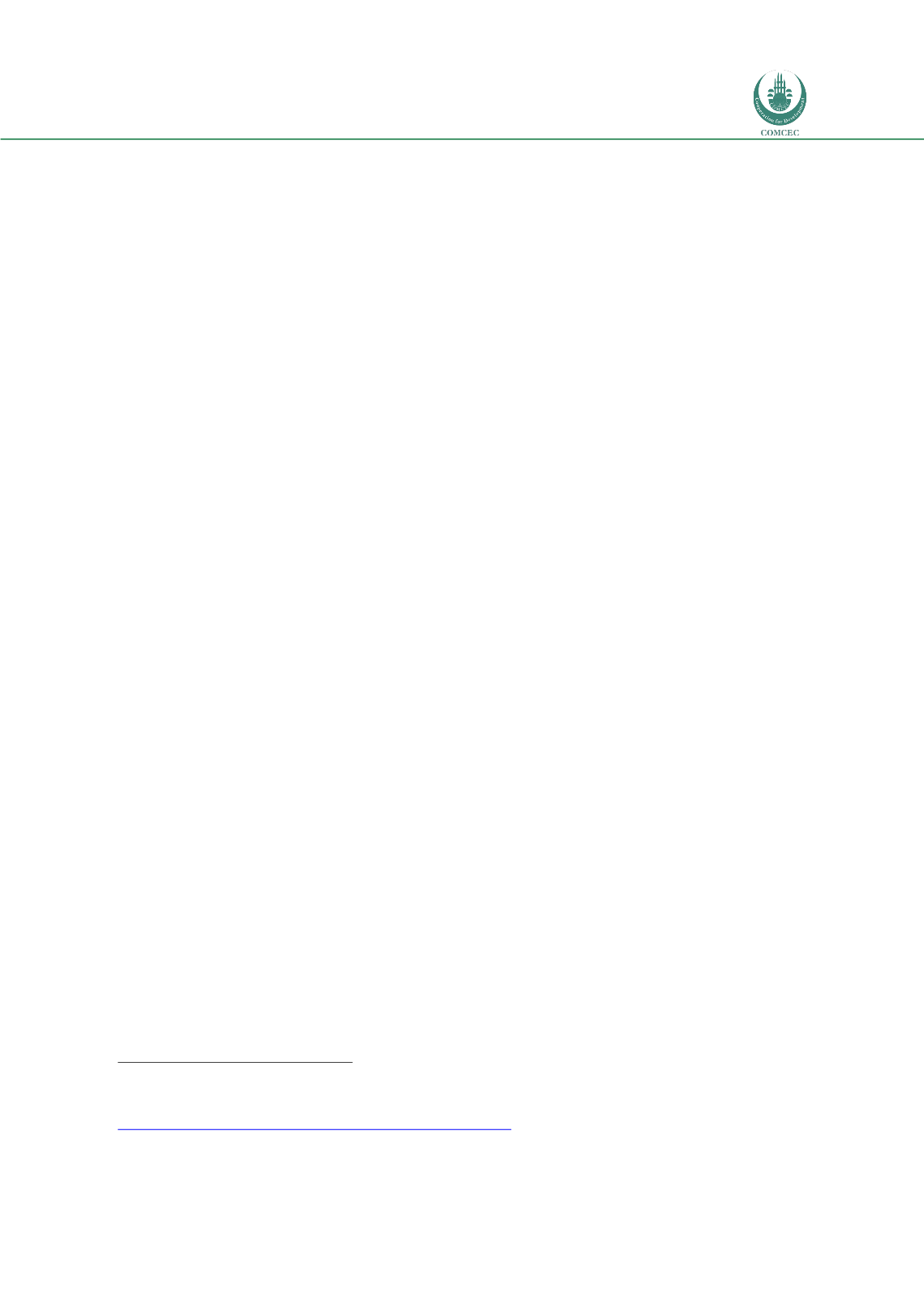

Forced Migration in the OIC Member Countries:
Policy Framework Adopted by Host Countries
179
Further complicating matters, with nearly half of refugees in protracted situations of
displacement, it has become much less meaningful to talk about “transit” as a temporary or
short-lived stage of the journey. In fact, generations of children from OIC countries are being
born into displacement or spending their formative years in countries of first asylum, and
millions of adults spend years in limbo with interrupted work or training trajectories as a
result. Life and livelihoods in transit can no longer be thought of as distinct from those in
“destination,” and thus the legal protections and access to work and schooling opportunities in
those places are more critical than ever.
OIC countries have been highly affected by these complex and shifting migration flows: OIC
countries host over half of the world’s refugees.
1
For many, forced migration overlaps with
already acute development challenges. Of the ten countries hosting the largest refugee
populations—half of which are OIC countries—all are classified as developing economies by
the UN. Many major hosts of refugee populations are thus already struggling to meet the needs
of their own population. Uganda, for example, has long faced a shortage of school places even
without the influx of additional refugee students.
Nevertheless, the protracted nature of most refugee situations means that most host countries
have a vested interest in the success of their refugee populations. Unless forced migrants are
given the opportunity to pursue stable socioeconomic lives, asylum countries may face the
prospect of becoming long-term hosts to a dependent population that has become caught in
the trap of multi-generational poverty. Measures to provide legal status to forced migrants, as
well as access to basic rights and social services, are key to avoiding such a scenario.
II. Policy frameworks for providing legal status and access to protection
While not all OIC countries are signatories to the 1951 Convention,
2
most of them implicitly
or unofficially respect the Convention’s core tenet: nonrefoulement. The fact that OIC
countries host over half of the world’s refugees and asylum seekers
3
testifies to this
commitment. Furthermore, countries that have developed (or are in the process of
developing) national asylum strategies, legislation, or institutions have clearly been influenced
by the principles enshrined in the Convention, including the definition of who is a refugee.
Despite this broad agreement on the principles of protection, the manner in which protection
frameworks and policies are implemented in practice varies widely. Both the 1951 Convention
and related international protection legislation (such as the Convention Against Torture)
require action by states at the national level to come into force. States thus have broad latitude
in determining how forced migrants are treated within their own territory. The following
takeaways have emerged from this research about how protection is accessed in practice:
1. Grounds for flight do not always match established asylum and refugee
frameworks
The most obvious distinctions are between individuals who fulfill the refugee definition under
the Convention
4
and other groups of forced migrants. Individuals who are not at risk of
persecution on account of one of the five recognized grounds will generally not be granted
refugee status and its accordant rights, with just a few exceptions where countries such as
Uganda and Sweden have chosen to broaden that definition.
5
The lack of protection
1
For a more detailed analysis of the effects of forced migration in the OIC, see Chapter 2
2
OIC countries comprise half of the states globally who have not ratified the 1951 Convention.
3
Author’s calculation of UNHCR 2015 Mid-Year Trends annex tables,
http://unhcr.org/myt15/#_ga=1.109208972.882962234.1454527865
.
4
See Chapter 1
5
Both include protection on the basis of gender, and Sweden allows for refugee protection on the basis of sexual orientation
as well. See Sweden and Uganda sections in Chapter 3.
















